
Operation Felix was the codename for a proposed German invasion of Spain and seizure of Gibraltar during the Second World War. Subject to the co-operation of the Spanish dictator, Francisco Franco, the operation did not occur chiefly because of Franco's reluctance to enter the war due to influence of British intelligence.

Alfred Sisley was an Impressionist landscape painter who was born and spent most of his life in France, but retained British citizenship. He was the most consistent of the Impressionists in his dedication to painting landscape en plein air. He deviated into figure painting only rarely and, unlike Renoir and Pissarro, he found that Impressionism fulfilled his artistic needs.

Operation Green often also referred to as Case Green or Plan Green, was a full-scale operations plan for a Nazi German invasion of Ireland planned by an unknown German officer known by the alias "Hadel" in support of Operation Sea Lion, the invasion of the United Kingdom, during World War II. Despite its detailed nature, Operation Green is thought to have been designed only as a credible threat, a feint, not an actual operation. Plan W, a planned occupation of all of the Free State by the British Armed Forces, was drafted by the British military in secret liaison with the Irish government to counteract any German invasion.
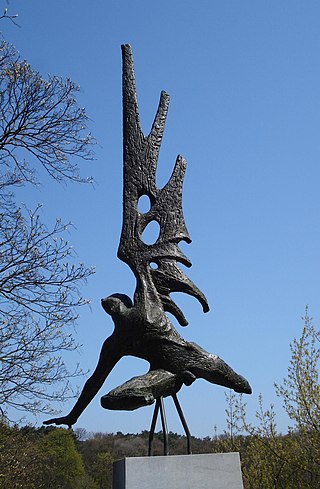
Englandspiel, or Operation North Pole, was a successful counterintelligence operation of the Abwehr from 1942 to 1944 during World War II. German forces captured Allied resistance agents operating in the Netherlands and used the agents' codes to dupe the United Kingdom's clandestine organization, the Special Operations Executive (SOE), into continuing to infiltrate agents, weapons, and supplies into the Netherlands. The Germans captured nearly all the agents and weapons sent by the United Kingdom (Britain).

Transilien Line R is a railway line of the Paris Transilien suburban rail network. The trains on this line travel between Paris-Gare-de-Lyon in central Paris, as well as from Melun station in the suburbs, and the south-east of Île-de-France region. Transilien services from Paris-Gare-de-Lyon are part of the SNCF Gare de Lyon rail network. The line has 60,000 passengers per weekday.

Barley sugar is a traditional variety of boiled sweet, often yellow or orange in colour, which is usually made with an extract of barley, giving it a characteristic taste and colour. In Britain it is usually sold in the shape of twisted sticks. Barley sugar is very similar to clear toy candy and to hard caramel candy in its texture and taste.
Günther Schütz was a German citizen who worked for German Intelligence (Abwehr) during World War II, he was deployed to Ireland, however, after parachuting to the wrong location he was apprehended by Irish police, and spent much of the rest of the war in prison, barring a brief escape.

Moret–Veneux-les-Sablons is a railway station in Veneux-les-Sablons and Moret-sur-Loing, Île-de-France, France. It is on the Paris–Marseille railway, and at the beginning of a branch line to Nevers and Clermont-Ferrand.
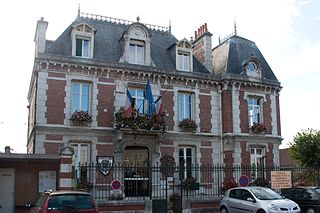
Souppes-sur-Loing is a commune in the Seine-et-Marne department at the southern edge of the Île-de-France region in north-central France. The town of Souppes-sur-Loing has 5,390 inhabitants (2017), and is located 86 miles south of Paris. It has a station, Souppes – Château-Landon, on the Transilien suburban railroad line between the Gare de Lyon railway station in Paris station and the city of Montargis, and many of the town's residents commute to work in Paris.
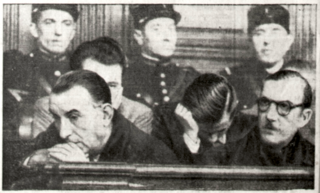
Henri Lafont was an underworld figure who headed the Carlingue, French auxiliaries to the German security services, during the German occupation of France in World War II.
Rudy de Mérode, real name Frédéric Martin was a French collaborator during the German occupation of France in the Second World War.
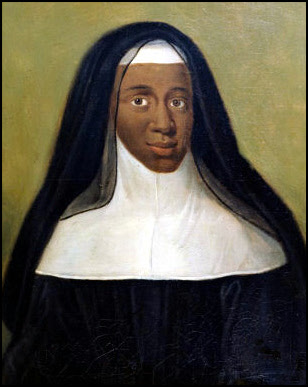
Louise Marie-Thérèse, also known as The Black Nun of Moret, was a French nun and the subject of accounts from the 18th century in which she was dubiously claimed to be the daughter of the Queen of France, Maria Theresa of Spain. Her existence is mentioned in several different sources.
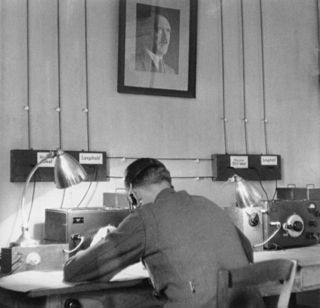
The Abwehr was the German military-intelligence service for the Reichswehr and the Wehrmacht from 1920 to 1945. Although the 1919 Treaty of Versailles prohibited the Weimar Republic from establishing an intelligence organization of their own, they formed an espionage group in 1920 within the Ministry of Defence, calling it the Abwehr. The initial purpose of the Abwehr was defence against foreign espionage: an organizational role which later evolved considerably. Under General Kurt von Schleicher the individual military services' intelligence units were combined and, in 1929, centralized under Schleicher's Ministeramt within the Ministry of Defence, forming the foundation for the more commonly understood manifestation of the Abwehr.
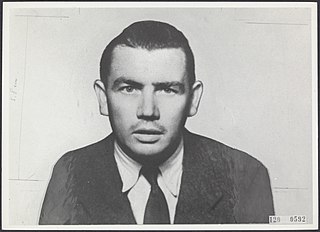
Christiaan Antonius Lindemans was a Dutch double agent during the Second World War, working under Soviet control. Otherwise known as Freddi Desmet, a Belgian army officer and SOE agent with security clearance at the Dutch Military Intelligence Division of the SOE (MID/SOE). He was known by the soubriquets "King Kong" or in some circles as "le Tueur" as he was reportedly ready to shoot at the slightest provocation. There is speculation that Lindemans was a member of Colonel Claude Dansey's Z organisation.
Harriet Hallowell (1873–1943) was an expatriate American artist who lived in France for fifty years. She was born in Boston to a Quaker family. During World War I she remained in France and volunteered at a hospital. The hospital was near the home she shared with her aunt Sarah Tyson Hallowell, located in the village of Moret-sur-Loing, which borders the Forest of Fontainebleau.

Sarah Tyson Hallowell or Sara Tyson Hallowell was an American art curator in the years between the Civil War and World War I. She curated a number of major exhibitions in Chicago, arranged the loan exhibition of French Art at the World's Columbian Exposition in Chicago, and worked with Bertha Palmer (1849–1918) to organize the murals for the women's pavilion for the fair. She then moved to Paris, where she served as agent for the Art Institute of Chicago. During World War I she and her niece Harriet Hallowell (1873–1943) volunteered at a small hospital. She lived in France until her death in 1924.

The railway from Moret-Veneux-les-Sablons to Lyon is a French 492-kilometre long railway line, that connects the Paris region to the city Lyon via Nevers and Saint-Étienne. The railway was opened in several stages between 1828 and 1861. The section between Saint-Étienne and Saint-Just-sur-Loire was the first railway line in France. It has functioned as an alternative line for the Paris–Marseille railway between Paris and Lyon. Its main use, besides local traffic, is now for the connection between Paris and Clermont-Ferrand.
Johann Wenzel was a German Communist, highly professional GRU agent and radio operator of the espionage group that was later called the Red Orchestra by the Abwehr in Belgium and the Netherlands. His aliases were Professor, Charles, Bergmann, Hans, and Hermann. Wenzel was most notable as the person who exposed the Red Orchestra after his transmissions were discovered by the Funkabwehr, later leading to his capture by the Gestapo on 29–30 June 1942.

Avenue of Poplars near Moret-sur-Loing is an 1890 painting by Alfred Sisley. It is held by the Musée d'Orsay, in Paris.

The Small Meadows in Spring, By is an 1881 painting by Alfred Sisley, on loan from Tate Britain to the National Gallery since 1997.
















